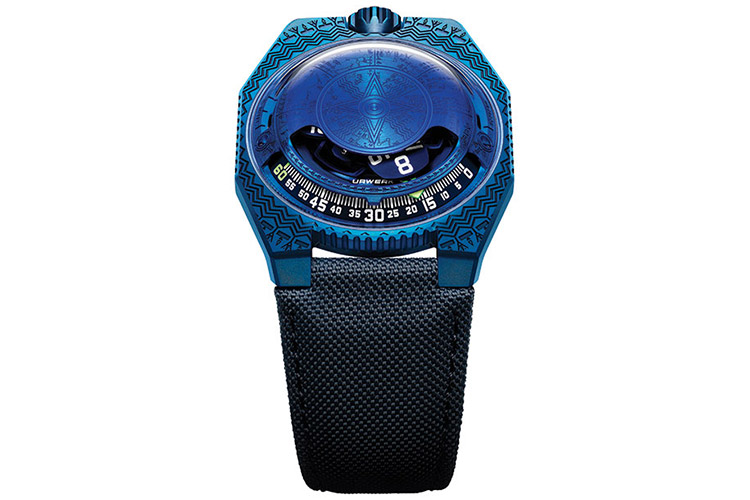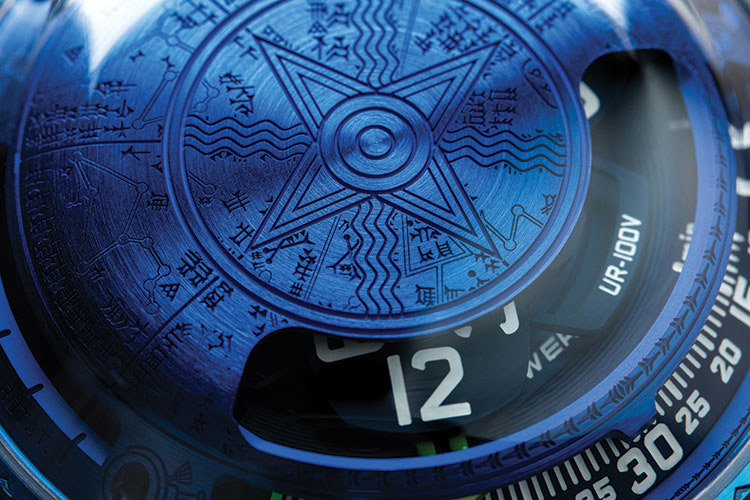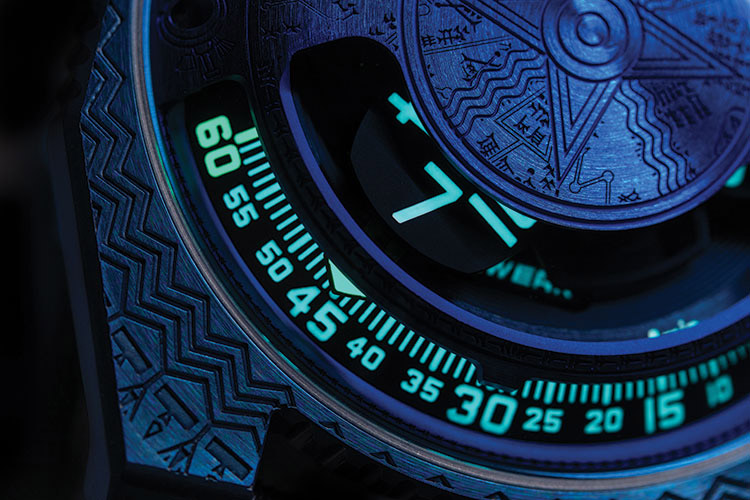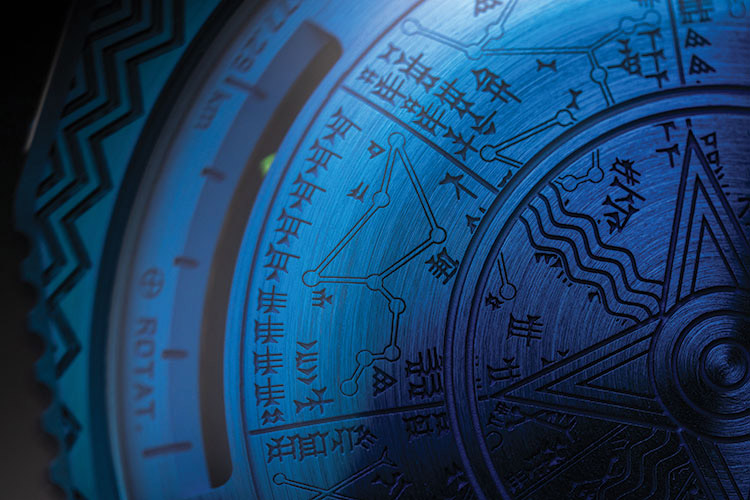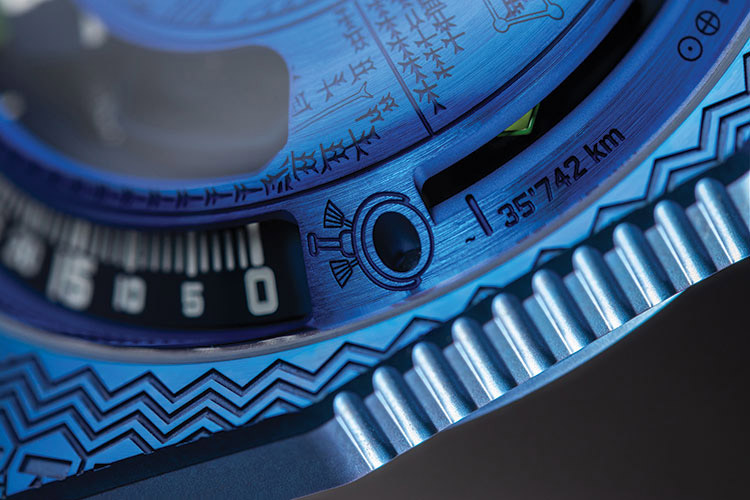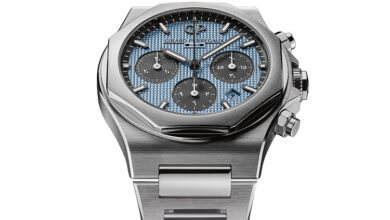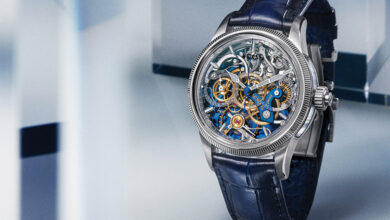A second Time and Culture from URWERK
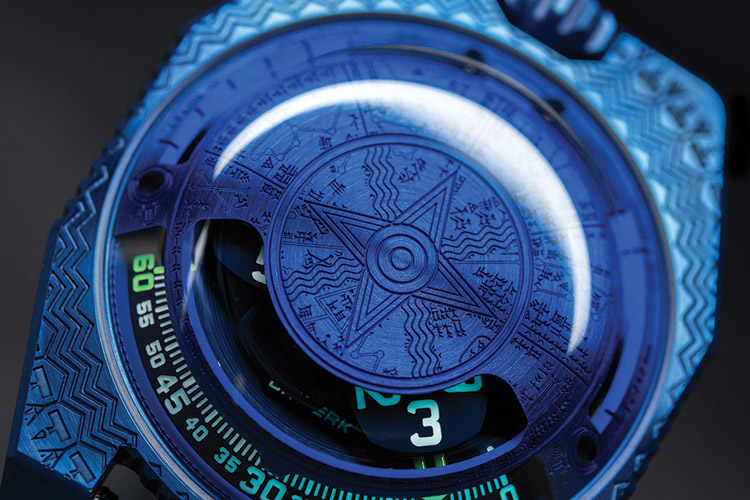
The second edition of Time and Culture from URWERK now plunges into the core of Mesopotamian civilisation, specifically the city of Ur, from which URWERK draws its inspiration. On this UR-100V joining the Time and Culture line, the hours and minutes are displayed alongside data on the Earth’s rotation
In 3000 BC, the inhabitants of Ur, the Sumerians, defined the very first unit of time, laying the foundations for time measurement as we know it today. Their golden number was 60, for 60 seconds and 60 minutes.
Enter the second edition of the 100V, Time and Culture line. Beneath the sapphire dome of the UR-100V Time and Culture II, aka ‘Sumer’, stands a veritable Pantheon in honour of these remote and ancient divinities. For a collection such as the 100V in which one of the indications refers to the Sun, the central presence of Utu is easily explained. While the god of the Sun is depicted here in his original over 2,000-year-old form, its design is both surprising and resolutely contemporary: a four-pointed sun representing the four cardinal points.
Between the lugs of the UR-100V, only just in the shadows and as if floating in orbit, sits the moon god Nanna, the chief divinity of the city of Ur. The blue colour of the UR-100V ‘Sumer’ refers to lapis lazuli, a stone whose use was linked to Innana, goddess of Love, War and Fertility. All that remains here of this material is its immaterial dimension, the infinite blue colour.
Space-related shapes stand out on the periphery, forming the backdrop to this UR-100V ‘Sumer’, while conveying and highlighting the Sumerian civilisation’s astronomical knowledge. Authentic sky charts and planispheres testifying to their love of the night and its luminaries. It is even said that the first foundations of ‘our’ astrology were laid during this period.
Just as with the first Time and Culture, the motifs here have been reproduced with the utmost meticulous care. The lines are fine, subtle, and laser-engraved. The accuracy of the work can only be appreciated through a magnifying glass. The ridges of the motif are satin-brushed, while the hollows are micro-sandblasted to create a velvety finish designed to highlight the volumes and do justice to this priceless heritage – the very foundations of the URWERK name.
Once the 60th minute has passed, the minutes hand vanishes and reappears as a kilometre counter. It illustrates the 477.29 kilometres covered every 20 minutes by every inhabitant of Ur. This is the silent journey made thanks to the Earth’s rotation. At the exact opposite end of the scale is the Earth’s revolution around the sun, i.e., 35,742 kilometres per 20 minutes. On the face of the UR-100V, hours and kilometres share the same status, the same value scale.
